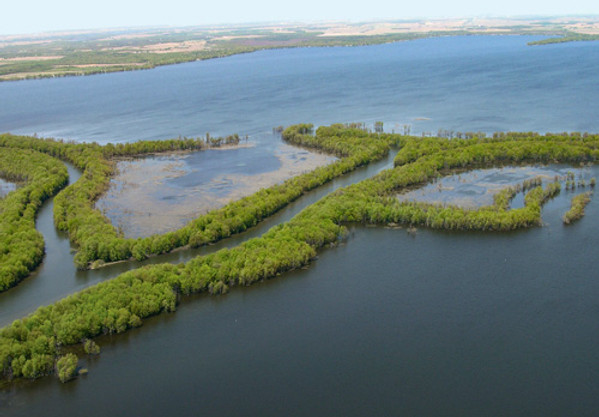Water Quality Issues
in Northern Lake Champlain
The Northeast Arm of the Lake and Missisquoi Bay tend to experience decreased water quality for a number of reasons, including lake geography, surrounding land use, and accumulated nutrient concentration within the lake sediment.
Unlike many lakes that are shaped like bowls and tend to be more evenly mixed, Lake Champlain is made up of distinct segments, each with different physical, chemical, and ecological conditions.

Lake Champlain flows northward from Whitehall, New York almost 120 miles, crossing the U.S. – Canadian border to its outlet at the Richelieu River in Québec. When nutrients, chemicals, and sediment enter the lake through its tributaries and after large rainstorms, the northward flow facilitates the movement of these materials throughout the main section of the lake.
However, in Missisquoi Bay and the Northeast Arm, relatively stagnant and shallow water, combined with high phosphorus loads from contributing sub-basins, causes nutrient levels to exceed safe levels. Additionally, shallow bays are also more affected by “legacy phosphorus” that is released from bottom sediments into the water column during low-oxygen conditions

This combination of conditions—excessive nutrients, calm water, and warm water temperatures—is ideal for the growth of blue-green algae blooms in the northern section of the Lake.
Phosphorus is a naturally occurring nutrient that is essential for plant growth. It is found in many substances, including soils, lawn and garden fertilizers, animal and human waste, and some detergents. While necessary for life, too much phosphorus can cause blue-green algae (cyanobacteria) blooms and excessive growth of other aquatic plants, which can harm fish and other wildlife. These blooms are also a serious human health issue because they can occasionally become toxic and are poisonous if ingested in large quantities

Blue-green algae is one of the major concerns for water quality in the Northeast Arm and Missisquoi Bay. It is for this reason that FNLC has prioritized projects that manage and reduce phosphorus runoff before it reaches the Lake. We work with municipalities, landowners, and community members to assess areas of concern and implement projects that reduce nutrient loading.
.png)
